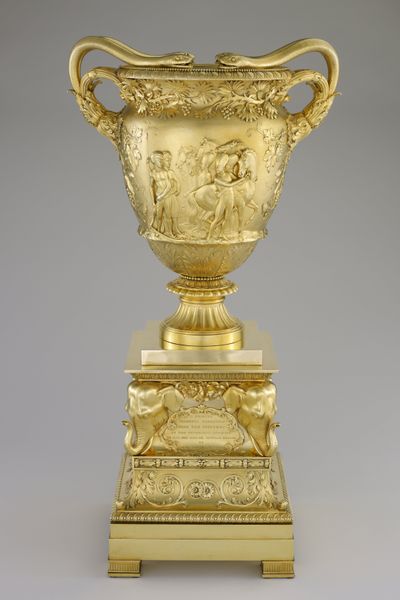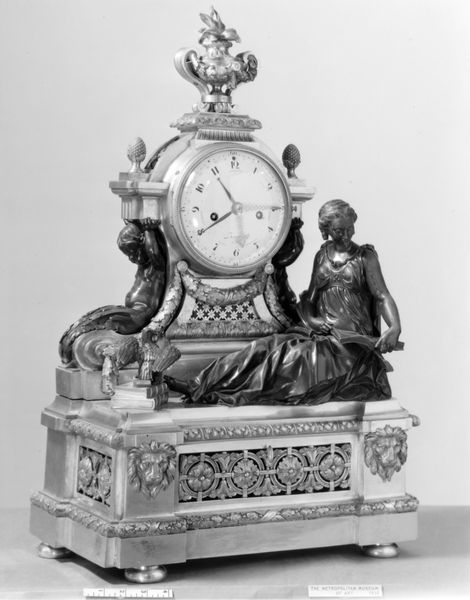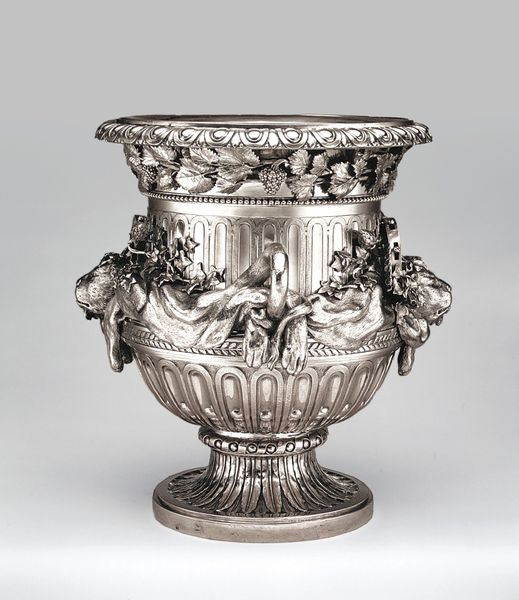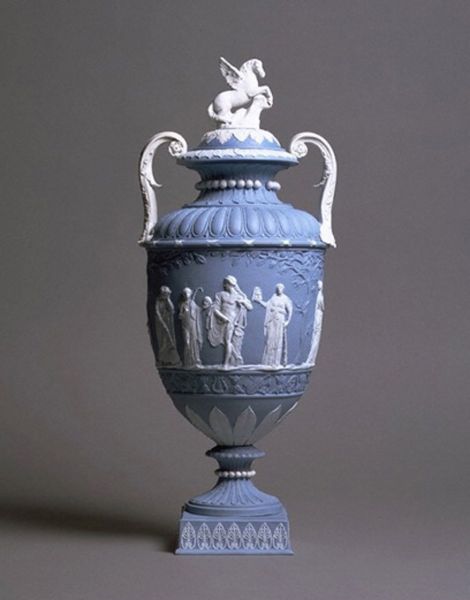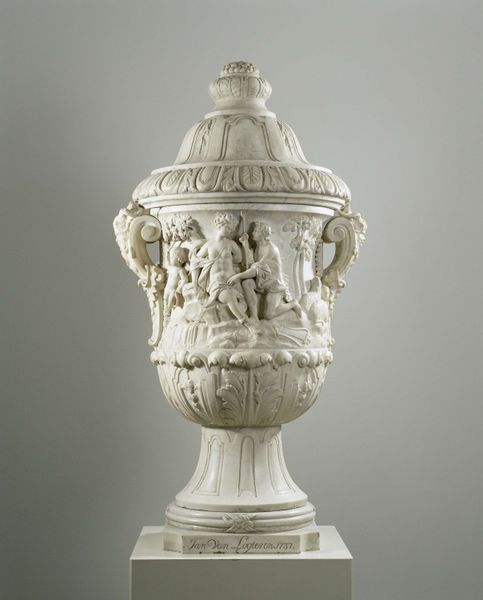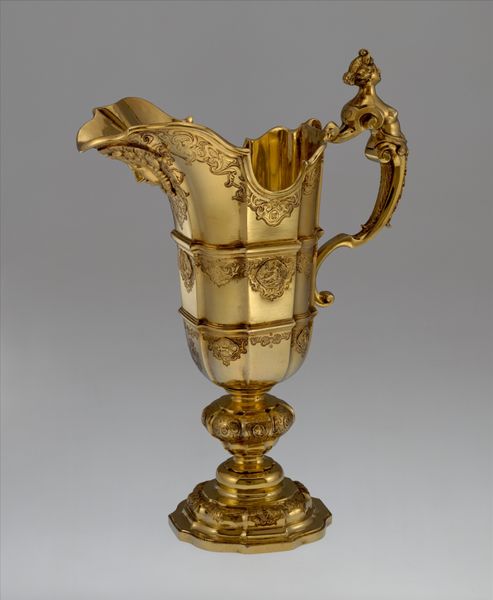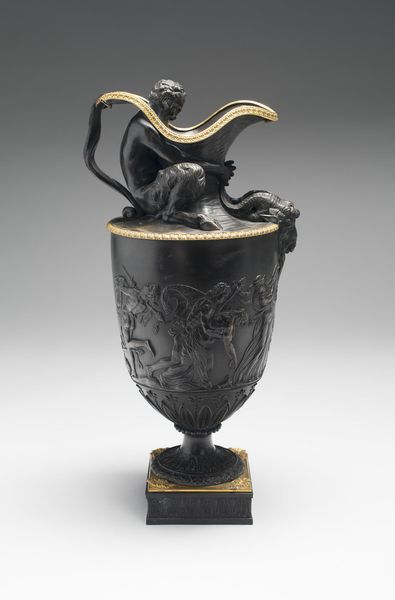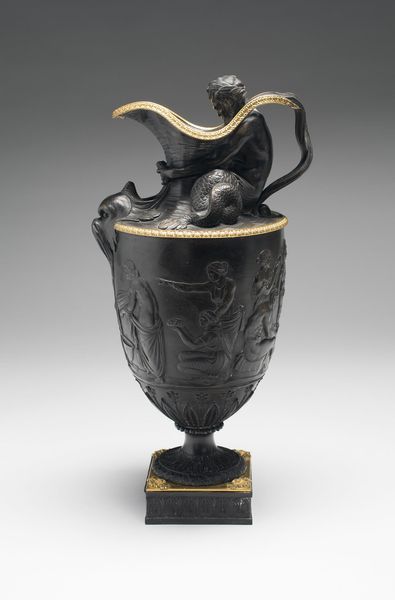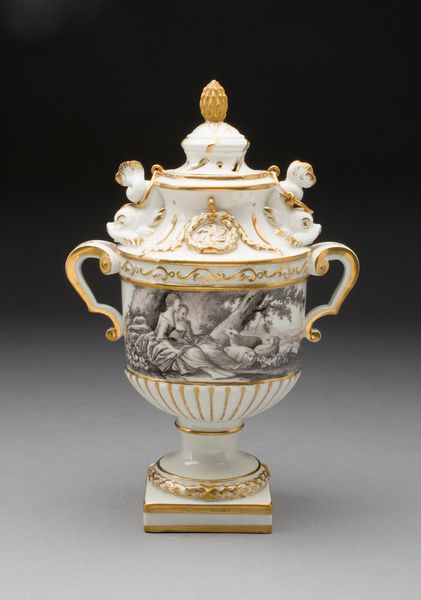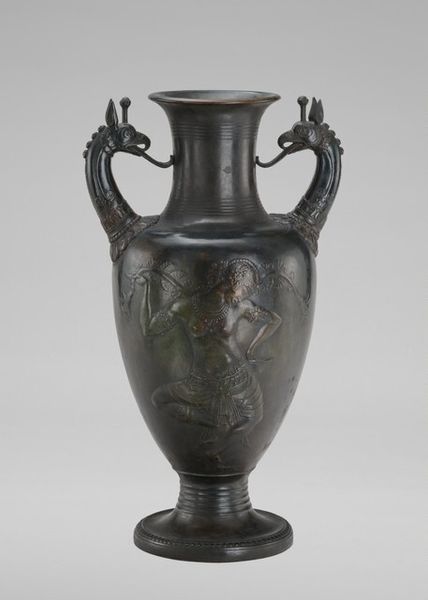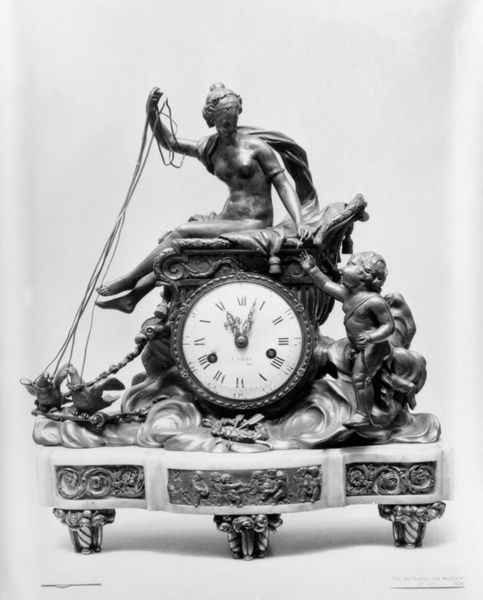
Dimensions: H. 28-3/8 x W. 10 x D. 10 in. (72.1 x 25.4 x 25.4 cm)
Copyright: Public Domain
This clock, currently residing at the Metropolitan Museum of Art, was crafted by Jean-Baptiste Lepaute. The object's form evokes ancient classicism, but it’s made of materials that speak to the luxury trades of 18th century France. Note the contrast between the clock's white marble and the gilded bronze detailing. The bronze is not merely decorative; it embodies skill in casting and chasing, demanding countless hours of labor. The marble has also been carefully worked to achieve a sleek finish, and its very presence implies access to global trade networks. Even the small figure perched at the clock face represents the system of labor. The black figure and serpents are probably patinated bronze. The figure has a dark color which suggests the slave trade. The clock’s design conflates timekeeping with power, ownership, and the exploitation of labor. When we consider how an artwork is made, and how it circulates in the world, the boundary between art and craft begins to dissolve.
Comments
No comments
Be the first to comment and join the conversation on the ultimate creative platform.
